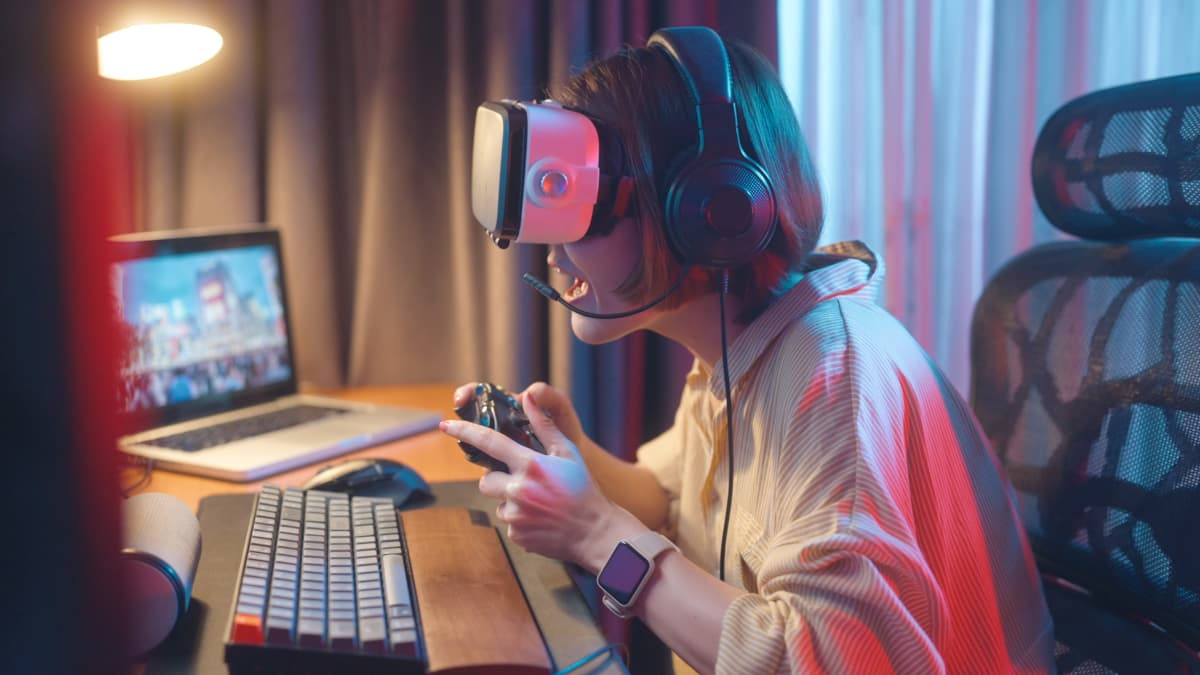Facebook is building its big Metaverse – a parallel universe in cyberspace. The company’s plans to withdraw from Europe are off the table, and now Facebook is even considering making Europe a second base. In the next five years, 10,000 new employees are to be taken on board with the aim of making Mark Zuckerberg’s vision a reality.

Florian Rabl, Managing Director of the content production company Ice Space Studios, explains in an interview that there will not be just one Metaverse which offers the added value missing from the standard virtual applications, and shares with us what a company’s own Metaverse can look like.
Mr Raibl, Facebook founder Zuckerberg sees the future of the Internet in Metaverse – a connection between the real and the virtual worlds, where users can meet up, play, talk, shop and work. What can this look like in real life?
Up to now, Zuckerberg’s Metaverse has only been the vision of a digital world where everything can basically take place. But it’s geared toward consumers and tailored to gamification and social networking. This Metaverse of the technology giant Meta, formerly Facebook, in which users should buy virtual land for instance, is only just a vision of this idea. In principle, each company can create its own metaverse where users can interact virtually with various devices and avatars in a three-dimensional space. Just like there is not just one social media platform, this world, too, will have many platforms which cater to the individual interests of their target groups.
Companies and customers can already meet up and interact virtually today. And due to social distancing in recent times, they have used this option substantially. What’s the difference?
The added value offered by a metaverse lies in its ability to provide an experience. For a purely informative interaction, a Zoom meeting is fully adequate and will continue to be warranted.
„But for a product presentation in the B2B segment, for instance, it gives companies completely new opportunities. With an interactive product application, the user can not only take a look at photos or videos of the product, they can also truly experience it and try it out as if they were on site. This simplifies the selling process immensely.“
But doesn’t this option already exist? As a B2B company, I can simply present my newly developed machine in an entertaining 3D video on my website or video platforms such as YouTube …
On YouTube, potential customers watch videos showing a predefined angle within a predefined time and which is normally explained by a narrator. This will continue to be a good way to present products. But what if the customer could experience the product personally? Let’s take an excavator as an example. It cannot be demonstrated just like that for a potential customer on site. In a metaverse, the excavator manufacturer could outfit their sales team with VR eyewear or with a tablet featuring augmented reality applications and place the excavator directly on the customer’s premises. The customer can then test drive the excavator with the help of VR eyewear and their avatar can get in touch with the avatars of the salespersons.

Florian Rabl, Managing Director of Ice Space Studios
Do users then also have to have VR or AR eyewear? These are naturally not very widespread …
The metaverse can be experienced with the use of such eyewear – then the user is completely shut off from the outside world. But it’s also possible to simply dive into the virtual 3D world in your browser. Many of our customers go for a hybrid model which offers an online application for the general public and that provides VR eyewear for the sales team or the team on site at trade shows. Going back to our example, the excavator can be controlled in the browser using an application and the computer keyboard, without the need for VR eyewear. The excavator bucket can be tested, configured and similar. The potential customer can then save this configuration and, using augmented reality, place it on their company’s premises. This bundled option for sales is a kind of metaverse and goes beyond what is possible with a presentation via video.
An important marketing and sales channel in B2B is trade shows. How is a metaverse different from the virtual presentations that have increasingly been taking place since the start of the Covid pandemic?
Here, too, it is first and foremost about the experience. Conventional virtual trade shows often consist of just stretches of pictures or renderings of products for clicking through, similar to a catalogue. The experience of an in-person trade show, with its known networking and communication opportunities, is not at all reflected in this. But in a metaverse, the trade show visitor can create an avatar and go with it through the trade show halls, much like a computer game. The avatar sees other visitors and exhibitors and can talk to them or ask for a call or consultation appointment. The avatar can listen to speakers on virtual stages, whose talks are transmitted via live stream, or can sit at the bar to chat with other avatars and lead casual sales talks. The human connection is therefore much easier to make in this way than, for example, in chat rooms in conventional virtual trade shows.
According to a survey, 61 per cent of Germans can imagine using virtual worlds like a metaverse or have already had experienced with such. So, there is likely a fair number of people who are open to advertising in this world. How can companies reach these users then?
The opportunities are enormous – from event sponsoring to virtual sales events. Everything is possible. Looking at marketing, the idea of creating your own brand world is very exciting, and then you simply push it with a link in the newsletter or in social media. Let’s take a B2B manufacturer of uniforms, for instance. Catalogues, and perhaps the company’s own online shop, can be supplemented with an own marketing channel in a metaverse. Here is where customers can configure their avatar and dive into a virtual world on their laptop or smartphone – a world where they can place the entire range of uniforms at the respective locations and invite workers to try them on. Winter jackets high up in the mountains, steel-toed shoes in a quarry, clothing for medical personnel in hospitals. This means the visual options for transporting the brand’s message are nearly unlimited.
So, you’re saying that every company will create their own metaverse and the virtual world being promoted by Facebook will not even be at the centre of all this?
Zuckerberg’s Metaverse can certainly be interesting for certain companies’ marketing purposes. For instance, various manufacturers of sporting goods are already investing highly and will perhaps open up a kind of Metaverse store there. But this world is not at all catering to the B2B segment. Within the business customer area, I can imagine, in addition to metaverses hosted by the companies themselves, that organisers of major industry trade shows will create a metaverse and set up access for participants who can exhibit their brand world there.
